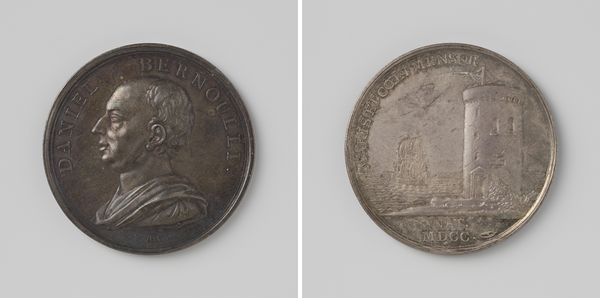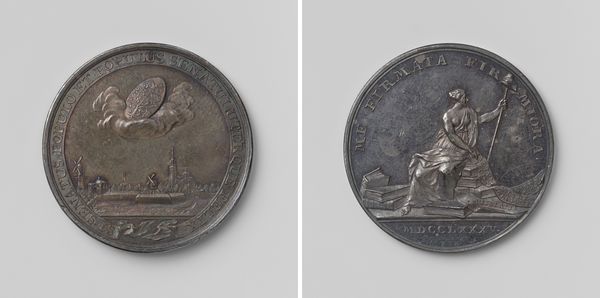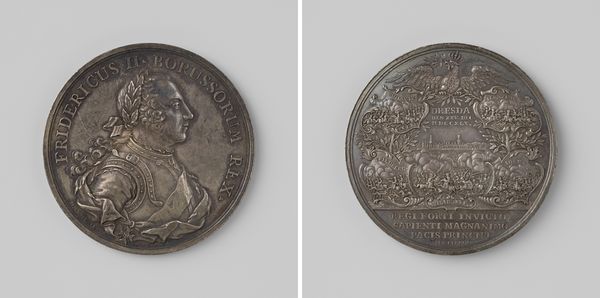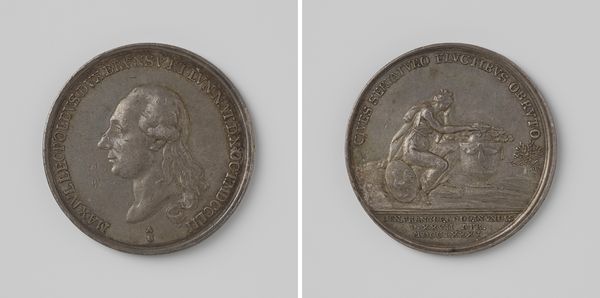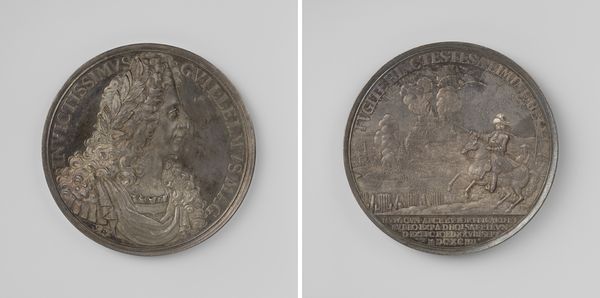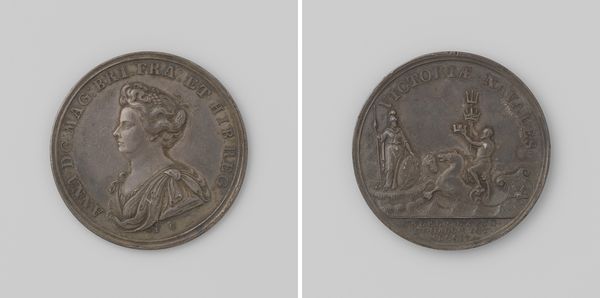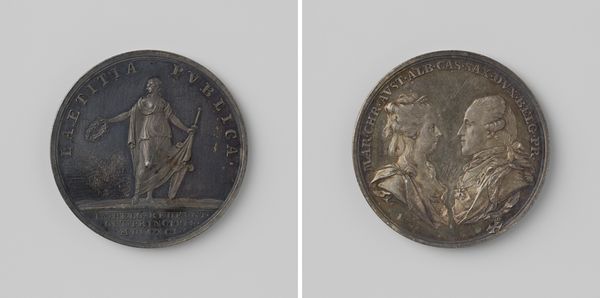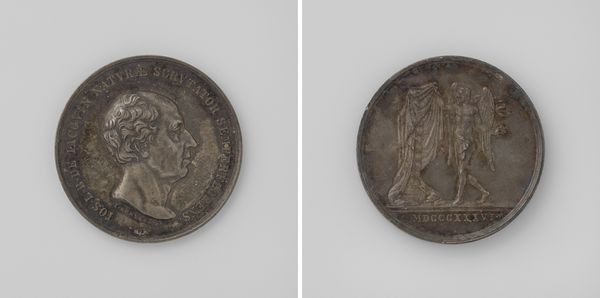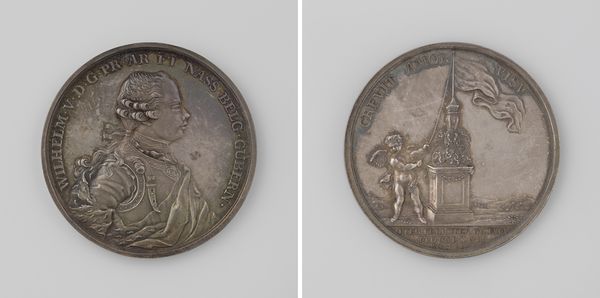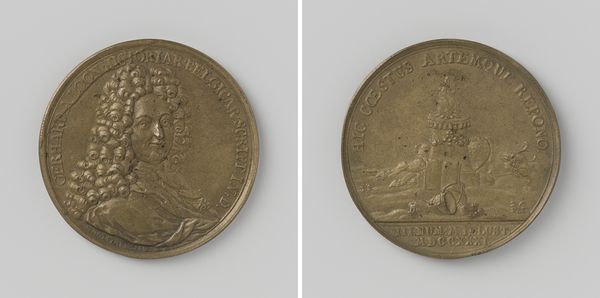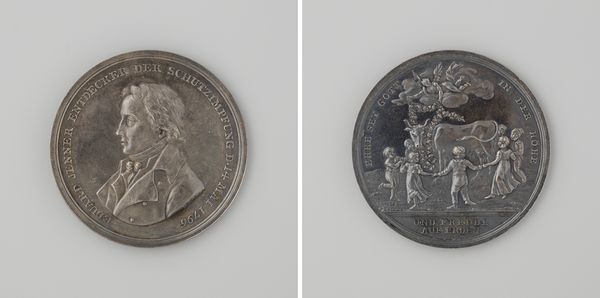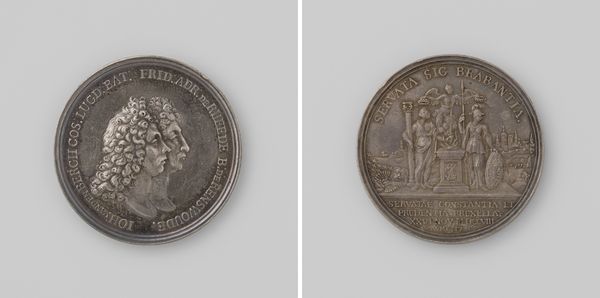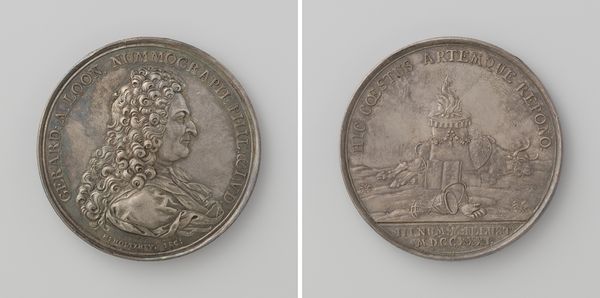
metal, sculpture
#
portrait
#
baroque
#
metal
#
sculpture
#
sculpture
Dimensions: diameter 3.9 cm, weight 23.92 gr
Copyright: Rijks Museum: Open Domain
Curator: This fascinating metalwork from 1674 is called "Waakzaamheid van Frederik Willem, keurvorst van Brandenburg" by Johann Höhn, which translates to "Vigilance of Frederick William, Elector of Brandenburg". What do you make of this Baroque piece? Editor: There's a kind of solemnity to it. The low relief carving, the hard metal surface—it feels weighty, important. Almost austere, despite its small scale. Curator: It's intriguing, isn’t it? We see Frederick William in profile, surrounded by an inscription. On the reverse, a lion sleeps beneath another inscription: "Dormiendo Vigilo". Sleeping, I am watchful. In the context of the Dutch Golden Age, Frederick William played a vital, yet sometimes complex, role in the shifting power dynamics across Europe. This piece could reflect anxieties about leadership and protection. Editor: The lion as a symbol of vigilance despite apparent dormancy, it echoes in emblems across history. In medieval bestiaries the lion has an awake watchfulness, here though there is a claimed paradox between apparent sleep, and hidden wakefulness... I can see the Baroque taste for emblems and personifications at play here; these aren't arbitrary associations. The image seems keen to claim an intrinsic quality, a powerful sub-conscious perhaps? Curator: Exactly. This was a period deeply engaged with the performativity of power. Consider Frederick William's struggle to centralize authority in Brandenburg amidst external threats. A leader’s virtue isn’t just about overt action, but also the image and qualities he cultivates. He seems to signal the inner fortitude to be ever-ready as essential. How do we grapple with images and the identity of 'watchfulness' that still confront our present? Editor: I am stuck by the 'duality of power' that the symbolic device captures - vigilance doesn't always mean visible force; and the sleeping lion suggests both dormancy and latent strength. In other ways this emblematic approach reveals that images function on an archetypal level, but are firmly located within their time too. Curator: I agree. It is difficult not to consider how potent images were (and still are), serving purposes as ideological justifications, political weapons or aspirations... The layers of power are always mediated. Thank you for that interesting reading, It is always nice to situate pieces like this and learn more of that important, historical context. Editor: The pleasure was all mine. Thank you!
Comments
No comments
Be the first to comment and join the conversation on the ultimate creative platform.
